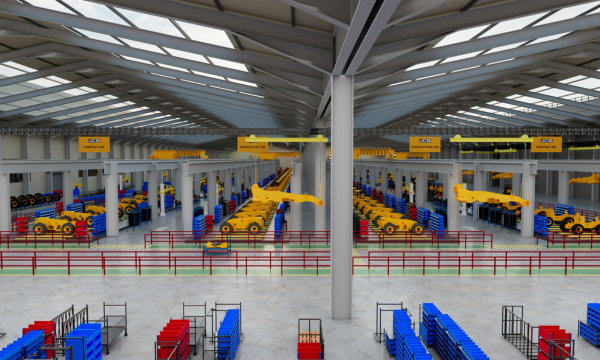 Written by:
Written by:
Nick Gallagher (Executive)
Nick a key member of Gambit’s Software & IT Services transaction team and is involved in a range of Corporate Finance services, including debt and equity capital raising, management buy-outs, disposals and acquisitions both in the UK and internationally.
Despite a seemingly exhaustive list of challenges facing fast-growing and emerging companies – such as recruitment and retention of high-calibre talent, access to affordable capital, the prevalent customer footprint and product suite of larger market players and the additional headaches that come with owning and running a business, the post-Covid environment offers significant opportunities to SMEs and fast-growing SITS companies looking to rapidly scale and compete with larger organisations.
The pandemic forced business models, consumer behaviours, employee interaction and business confidence to transform overnight. The short-term trends witnessed in the first national lockdown such heightened demand for essential goods and household items (pasta, rice, hand sanitiser and toilet roll to name a few) have naturally corrected – whilst other trends, particularly software and IT driven, remain prominent.
Many of us experienced ‘Zoom fatigue’ following consecutive months of back-to-back virtual meetings and social interaction with colleagues or friends limited to a screen. A return to in-person meetings was anticipated as soon as restrictions allowed, and the daily use of video conferencing was envisaged as being by exception rather than the default. However, this has not been the case. The pandemic has created multiple long-lasting and seemingly permanent adaptations to both life and work, with the cost and efficiency benefits of deploying tailored and flexible SITS solutions being recognised.
Software & IT services companies are at the forefront of facilitating these adaptations, particularly emerging and fast-growing SMEs. These companies have the opportunity to capitalise on evolving consumer and investor sentiment in the pursuit of geographical and sectoral expansion, access to capital and enhanced shareholder returns.
Commercial traction is being fuelled by an increased willingness to deploy technologies across niche use cases
The first mover advantage is no longer a prominent factor in determining whether a business will succeed or fail. Finding the correct market niche and network of customers has enabled disruptive SITS companies to thrive, underpinned by key customer wins and technology partners aligned with their long-term strategic ambitions.
Successful SITS SMEs have focused on addressing narrow use cases, achieving scale via rapid sales growth within targeted demographics and investing heavily in marketing and business development functions to sustain this. Commercial traction within defined sectoral niches has helped fuelled expansion, rather than a ‘catch-all’ approach relying solely on product differentiation.
Digital transformation and adoption has been witnessed across all sectors of the economy, with data from Openreach revealing that UK internet use doubled in 2020 due to the pandemic – largely attributable to video calling, livestreaming, online gaming and home working.
The pandemic has led business owners and key decision makers to explore additional technological solutions to maximise sales, minimise overheads and reduce the number of administrative, manual processes. SITS programmes are being deployed beyond conventional technologies and across a wider range of providers, from start-ups to PLC’s.
SMEs addressing specific sectoral challenges, which may have previously been deemed non-critical, are now viewed as attractive solutions to improve margins and productivity. A survey of UK businesses conducted by the Centre for Economic Performance (CEP) and the Confederation of British Industry (CBI) found that that more than 60% of firms have adopted new digital technologies (such as remote working technologies or cloud computing) or new management practices since the start of the pandemic, and nearly 40% have invested in new digital capabilities (such as e-commerce or advanced analytics).
SITS SMEs have the ability to increase commercial traction with these enterprises, supported by a willingness to deploy emerging technologies with speed agility and increased attention to customer service and support – which larger homogenous technology providers often fail to provide.
M&A and investment strategies are supplementing organic growth
M&A strategies offer significant growth opportunities to SITS SMEs, whether in the form of development capital and the subsequent support from investors, or the synergies and economies of scale generated by acquiring smaller competitors or disruptive technology providers.
Supplementing organic growth with M&A activity can enhance product suites, geographic reach, employee expertise, end-market penetration and shareholder value overnight – with transactions not limited to large conglomerates and publicly listed companies.
The UK economy has witnessed a rebound in investor confidence since the peak of the pandemic. Private equity and venture capital funds have amassed record levels of capital ready to be deployed to covid-resilient sectors and business models predicated on recuring revenues and scalability – all characteristics of well performing SITS companies.
Capital providers recognise that Covid-19 has considerably accelerated technological adoption across all industry verticals and attention is now focussed on investing in disruptive SITS companies that are well prepared for the next wave of advancement.
The opportunity to meet and interact with capital providers has been supported by video conferencing, condensing investor roadshows from weeks to days, while providing increased bandwidth for equity providers to review additional investment pitches and engage with SMEs. Similarly, SITS companies undertaking consolidation strategies have been able to interact with acquisition targets at reduced travel and time costs, with video technology supporting shorter transaction timelines.
Tangible opportunities have been presented to SITS SMEs as a result of the pandemic. The current M&A environment combined with strong sectoral tailwinds has established an inflection point for these companies, which are taking advantage of access to affordable growth and development capital and executing buy-and-build strategies to expediate commercial traction and business growth.











